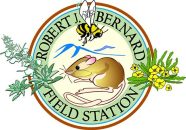Nuffer, Alex (2015)
Relationship between soil nutrients and vegetation communities at the Robert J. Bernard Biological Field Station.
Bachelor of Arts, Keck Science, Environmental Analysis.
Advisor: Colin Robins.
Increased anthropogenic disturbances have led to the endangerment of coastal or interior sage scrub vegetation communities found primarily in southern California in western Riverside County and northeastern San Diego County. Restoration practices have primarily focused on aboveground components and less on the importance of soil composition. The purpose of this study was to determine whether variability in soil nutrients was correlated with shift in vegetation communities at the Robert J. Bernard Field Station (BFS) in Claremont, California. Soil pH, extractable elements, and Olsen phosphorus were measured in each of six vegetation communities across the BFS. Samples were mapped and interpreted for relationships within and between vegetation communities. Soil pH and plant available ions including zinc, copper, manganese, and lead differed significantly (ANOVA, p<0.05) across vegetation communities. Although the variability of soil nutrients within the vegetation communities suggests that substrate is most likely not influencing vegetation distributions and patterns, in neither undisturbed nor disturbed sage scrub communities, restoration practices should utilize known soil characteristics as a way to increase precision and efficiency. The results of this study suggests that other factors including historical land use management, organic matter, individual plant species, or ecological factors could be shaping vegetation at the BFS to a greater degree than soil nutrient composition.
